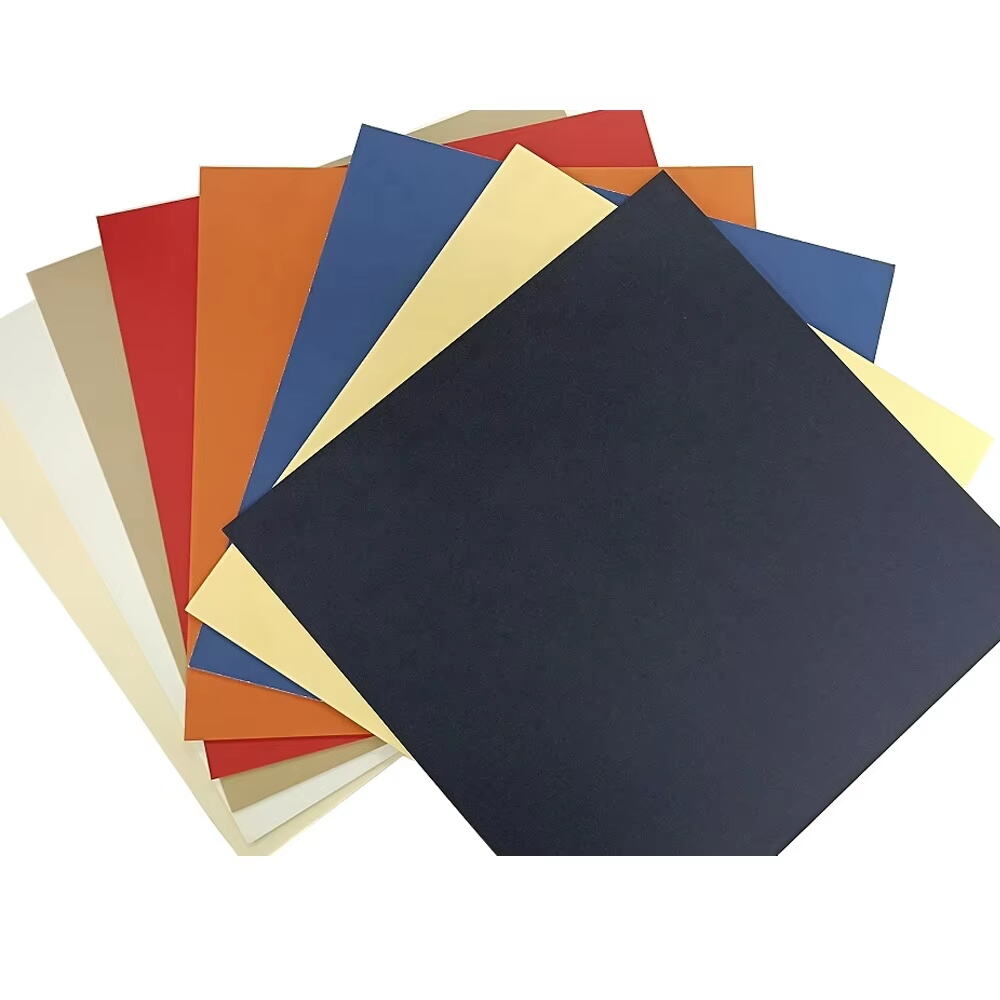The Importance of Selecting the Right Mat Board
Role of Mat Board in Art Presentation and Protection
The mat board will enhance the art work & serve as a piece of decoration as well. As a visual boundary, it creates an attractive interest on everything it embraces. Not to mention that it adds beauty, and protects from potential airborne contaminants like dust and polluts. Mat Boards, by the way, protect artwork from physical contact with the frame, and from becoming marked or discoloured over time. This protection is crucial to ensuring the life of the artwork and preventing damage for years of viewing.
Impact on Artwork Longevity and Visual Appeal
Selecting the right matting can significantly affect how artwork will look and last. Good quality mat boards are made to not 'age' and turn yellow or become fragile and crack, extending the life of the piece. In addition, an artfully appointed mat board can add to the visual appeal of the artwork, drawing in the viewer and making the work look more appealing. Feature the colors and the patterns of your art, and the right mat board can turn a piece into a striking focal point.
Understanding Mat Board Materials: Acid-Free vs. Standard Options
Benefits of Acid-Free and Archival-Grade Mat Boards
Acid-free and Conservation mat board is essential for the preservation of works on paper from acid damage. These Matboards are not only acid free but also buffered alkaline, designed to protect and prevent from chemical deterioration like yellowing and fading with contents of acid. The archival-grade selection additionally serves the purpose of long-term preservation, as it rises up to the highest standards of the industry, offering resistance to the original colors and textures. Many museums and private collectors elect to use archive-grade paint and canvas because it counteracts the wear and tear of aging, extending the life of the painting as a whole.
Risks of Standard Mat Boards for Sensitive Artwork
To use regular mat board, on any sensitive artwork, can be very dangerous. Some of these boards can seep acid and nasty chemicals, causing darkening and surface decomposition. In time, they deteriorate, doing irreversible damage not only to the visual look of the art but also to the artistic structure as well. Aperture cards mounted in the ordinary mat board are also more inclined to degrade over the time and frequent rehabilitation is both expensive and does not always achieve original quality. This is why selecting the must-have mat board type is one of the most important decisions for the conservation of the artwork.
Conservation vs. Museum-Grade: Key Differences
Here are some pointers for choosing mat board and knowing the differences between conservation and museum-quality stands. Museum-quality boards are made of the very highest quality conservation grade material. They are ideal for items that are irreplaceable, or not in constant use. Conservation-quality alternatives, on the other hand, offer a compromise between price and long-term preservation for collections that get hands-on attention. It all depends on multiple factors, like how valuable or how significant or how the art is intended to be displayed. It is this considered choice that will guarantee the product lasts and allows the artwork to look its best.
Choosing Mat Board Thickness for Structural Integrity and Frame Depth
4-Ply vs. 8-Ply: When to Use Each
The proper thickness of mat board is important for how the art looks and how stable and supported it is on display. Lightweight 4-ply matting is perfect for displaying a variety of artwork sizes! They support enough to enhance the picture without smothering it. For larger or heavier work go for an 8-ply mat board which is much stiffer and will keep your artwork from bending to its frame. The choice between these thicknesses is determined by the required properties that are unique to the artwork and the intended display environment. For example, in areas where artwork will be touched often or where it will be subjected to certain conditions, the more solid 8-ply may be a more sensible choice.
Matching Thickness to Frame Depth and Art Size
Correctly matching the board weight with your frame depth matters in order to maintain a harmonious and balanced look. Knowing how deep is a frame lets you choose the right thickness for the mat board you use, so all of the visual components work together nicely. The thinner mat is perfect for shallower frames – it keeps the artwork from getting squished up against the glass and the artwork doesn’t look like it’s is inserted too deep into the frame. On the other hand, the more recessed a frame, the thicker the mat required to fill the space, which is crucial in preventing the artwork from being pressed up against the glazing and also ensures that the image is not sunken into the frame. Not only does this allow the artwork to be made the focus, aesthetically, but it also performs the task of supporting the artwork in years to come. Not managing this balance well can result in awkward presentations where the art is at risk of “getting lost” too much in the frame, so as to lose its punches.
Color Theory Principles for Harmonious Mat Board Choices
Using Complementary Tones to Enhance Artwork
Contrasting colors The contrast of colors will make your artwork pop. By choosing mat board colors to match your artwork piece you can direct the viewer’s eye, highlight a feature and create a sense of flow. It is a concept that is well-used in galleries to draw the gaze both to and around the art and for the viewer to be drawn to what the artists intended as points of interest, the eyes are drawn to a change of colour.
Neutral Palettes for Versatile Framing
Neutral tones in mat board are a beautiful way to show off your art. These options are versatile and can fit in with most any art or decor style. Artists and collectors frequently gravitate toward neutral finishes because their versatility means that they can blend with just about any surroundings, always drawing more attention to both the work and to the overall, unified affect of the presentation.
Contrast Techniques for Bold Statements
Opposite colors of mats will make a statement that is so powerful that viewers will have no choice but to be drawn in. Strategically placed complementary or contrasting hues can turn your artwork into something transcendent—not just to view, but to experience. It is especially effective when applied to contemporary or abstract art, when plain differences between the tones of colours can have great impact. While generating interesting dialogues to interpretations, the monochromatic juxtapositions can be either more subtle and indirect or bold and direct striking.
Preservation Techniques: Ensuring Long-Term Artwork Protection
Archival Standards for Mat Board and Backing
The use of archival grade standards certified by FSC are important for the preservation of valuable artwork, to keep that away from acid and corrosive material. These specifications include the use of materials that are acid free and lignin free to protect the delicate artwork, as well as the adhesives used in the construction of the shadow box. By staying true to archival inputs, we ensure both the art’s continuity and the truth of the framing journey, a responsibility crucial for collectors and galleries whose priority is to archive art history. So knowing and following archival standards is necessary for anyone who is serious about preserving and protecting their art collection.
Environmental Factors: Light, Humidity, and Temperature Control
Controlling environmental elements like light, relative humidity, and temperature is crucial in order to protect works from harm. If you allow too much light on the piece, the color can fade, causing the artwork to lose some of its luster. In the same way, rapid changes in humidity and temperature may also lead to warping and other deformation. To limit this kind of damage, sale of framing products that include protective glass and UV filter will enable to fight the environmental “enemies”. If we manage these things, we can make certain that the work of art is preserved, over time, so we can see, and enjoy, it. This forward-looking process indicates the significance of environmental monitoring in art preservation.
Frequently Asked Questions
What is the purpose of using a mat board in art framing?
Mat boards serve to enhance the aesthetic appeal of artwork, protect it from damage like dust and pollutants, and prevent discoloration by keeping it separate from the frame.
Why should I choose an acid-free mat board?
Acid-free mat boards prevent acidic degradation, which can lead to yellowing and fading, thus prolonging the life and integrity of the artwork.
What are the advantages of using an 8-ply mat board over a 4-ply?
8-ply mat boards provide enhanced rigidity and are suitable for larger or heavier pieces, offering better support and maintaining the frame's structure.
How can environmental factors affect my artwork?
Exposure to light, fluctuations in humidity, and temperature changes can lead to fading colors, warping, and other damages that can compromise the artwork's longevity.
Table of Contents
- The Importance of Selecting the Right Mat Board
- Understanding Mat Board Materials: Acid-Free vs. Standard Options
- Choosing Mat Board Thickness for Structural Integrity and Frame Depth
- Color Theory Principles for Harmonious Mat Board Choices
- Preservation Techniques: Ensuring Long-Term Artwork Protection
- Frequently Asked Questions

